This month’s blog is a little different, in that it describes a trek I recently completed, and gives some useful tips for anyone who is embarking on the same adventure! Enjoy!
February saw the arrival of my Dad in Chile for 2 weeks – direct flights from Heathrow with BA now make it much easier and worthwhile to fly out for a shorter period of time. In that he’s not a lover of cities, we headed straight down to the south of Chile, to do some walking.
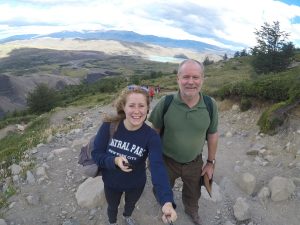
Having completed the 4 day ‘W trek’ in Torres del Paine National Park, Patagonia, with my friends in December, I was desperate to return and do the much longer, more challenging ‘O trek’. The scenery really is just how it appears in the photos stunning. For that reason, trekking in Patagonia has been my favourite trip that I have done here in Chile. We didn’t quite do it as one should however, choosing to complete the 8/9 day route in a concise 6 days…but that’s the price we had to pay for not booking in advance. It’s not unreasonable to do the walk in 6 days, especially if you’re young and fit. However for comfort, I would definitely recommend spreading the walk out over 8/9 days as otherwise it means three long days walking for up to 11 hours.! My Dad would agree. Unlike us, if you book in good time you’ll be able to tailor the walk to your capabilities.
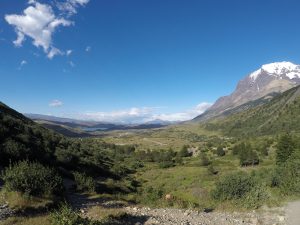
Torres del Paine National Park is probably Chile’s most famous, and yes, it is pretty full of tourists, but even so, it doesn’t detract from the beauty of the experience of trekking within it. However, trekking the more difficult O trek is a better way to escape the crowds, as its length and difficulty mean far fewer chose to undertake this route. Unlike the W, the O is much more of a wilderness trek; the path underfoot is a lot less trodden. We found ourselves wading through mud, climbing over large boulders and shimmying along high edges; at times it certainly felt more like an obstacle course than a walk! On the contrary, due to the much greater number that undertake the W trek, its paths are much more like those you would find on a walk in a British national park.
There are some more challenging parts on the walk, especially given the terrain under foot in some parts, but I wouldn’t say the walking itself is particularly tough. What poses a greater challenge is the weather, and the weight of your backpack. The weather in Patagonia is beyond unpredictable; it is not uncommon for a perfect blue sky day to turn to a wild storm in a matter of hours. Although this time we were so very fortunate to have perfect weather the whole way round, when I was there in December, we spent 8 hours walking from one end of the park to the other in torrential rain and intense winds. I was wearing 8 layers in total, and still cold – you must go prepared! Carrying a heavy rucksack over long distances is the second factor that makes the walk more exhausting. Packing lightly is essential as everything you take you have to carry, but you must ensure that you have adequate clothing for wet and cold weather. Obviously the bigger the group , the more people to carry camping equipment and food which can make a big difference.
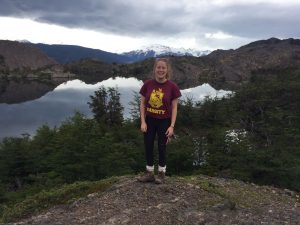
Most hikers rent all their equipment in Puerto Natales, a small city that is effectively base camp for trips to the park. When completing the O, you must will need to take camping gear as it’s not possible to stay in refuges (hostels) all the way round. The W can be completed without the need to camp. There is a limited selection of food and alcohol available at most campsites, and cooked meals at the refuges, but unsuprisingly, they are not cheap. If you’re trying to keep the trip low-cost, it’s definitely advisable to take all your own food and alcohol. Having walked for 10 hours from the Dickson Refuge to Camp Paso battling the very strong winds, a glass of wine was our salvation…!
http://http://www.parquetorresdelpaine.cl/upload/files/Mapa_2016_2017.jpg (Link to route map)
The names of the treks reflect the routes undertaken; both involve walking from campsite or refuge to the next, carrying all your gear. The O trek takes in all the main features of the park, including the Grey Glacier, the Torres, the Valle Francés and Paso John Gardener. Paso John Gardener undoubtedly poses the greatest challenge along the route, involving a very steep climb up to 1200m above sea level. From below, we looked up trying to distinguish where the route would take us, and thought no, it’s clearly not up over that top edge…but yes, turns out that’s where we were headed! The strong winds were the hardest thing to battle with, but every step proved worthwhile when we you reached the top and got stunning views out over the expansive Grey Glacier. It truly was spectacular to see it in all its glory, sweeping down the valley, glinting in the sun. Unforgettable .A picnic at the top was a fabulous way to take in the view before embarking on the equally steep descent. By this time the knees were really starting to hurt, as it’s a long 2 and a half hours or so walking down large steps, dropping about 600 feet. The carton of cheap wine we had carried with us tasted oh so very sweet when we finally made it to Camp Paso.
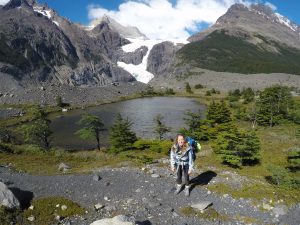
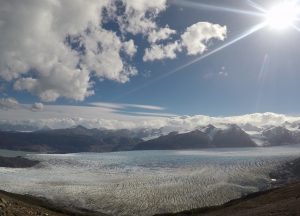
Wildlife is not abundant in Patagonia; there are some birds including birds of prey, guanacos (like llamas) and of course the puma which lurks in the background, but to our surprise, it’s definitely not a haven for wildlife. Perhaps it’s due to the harsh weather conditions, especially during the winter. Rather it’s the scenery you go for. Along the 105-130km ‘O route’, you’ll come across glaciers, lakes, torres, rivers, valleys as well as contrasting landscapes –some dry some lush. It was a fabulous experience that I would urge anyone visiting Chile to undertake. Although not cheap, you cannot beat seeing the Grey Glacier in person, or getting to the top of the Torres walk to see the Torres massifs in all their glory. It’s refreshing to put down your phones and laptops for a week or so and just enjoy your surroundings, and appreciate what truly is raw geography. A fantastic experience, and I really do hope that one day in the future, I’ll be able to return to Patagonia for some more exploring.
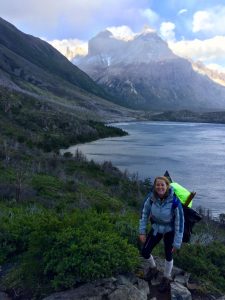
Top tips:
- Book your buses in advance – every bus. Somehow I completely forgot to do this, and it makes life much more difficult, especially during peak season.
- Reserve your camping spots – in order to enter into the park you must have every night booked. This enables the rangers to keep track of where people are along the route, and how many people have entered the park. I ”blagged” my way through several ranger stations claiming that I had the 4th night booked, but I had actually been unable to reserve it online…so when we got to the final ranger station and were required to show our reservation, we got caught. After a lot of persuasion and persistence, they reluctantly let us through, but it’s not worth the hassle – book in advance!
- Come prepared! As mentioned above, the weather in Patagonia is far from reliable. Make sure you’ve got plenty of layers, waterproofs, walking boots etc. And don’t scrimp on the camping gear…we decided as we were only camping for two nights, we wouldn’t bother carrying sleeping mats. There were many regrets when we woke up many times throughout the night, freezing cold. Mats serve as a much needed insulator during what can be very cold Patagonian nights!
- Embark on the O in an anticlockwise direction. Very few walk the route clockwise, and there’s a reason for that! To do it clockwise would involve an incredibly steep, long ascent up to the top of Paso John Gardner, much worse than the other way round. It is possible, but save yourself the pain and go anticlockwise.

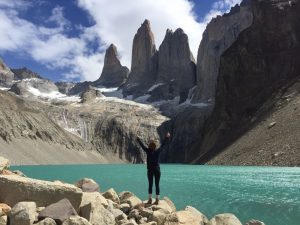
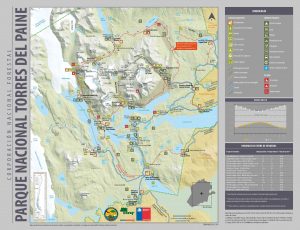
So enjoyed this incredibly well written and detailed blog. Good for you. It brought back happy memories of our visit to Torres Del Paine several years ago. Sounds like an amazing journey, albeit pretty tough!
Very interesting. Personally speaking,the mention of pumas, the absence of golf courses and the advice to carry your own copious supplies of alcohol makes it an unlikely adventure for me. I’ll just make do with reading about it.